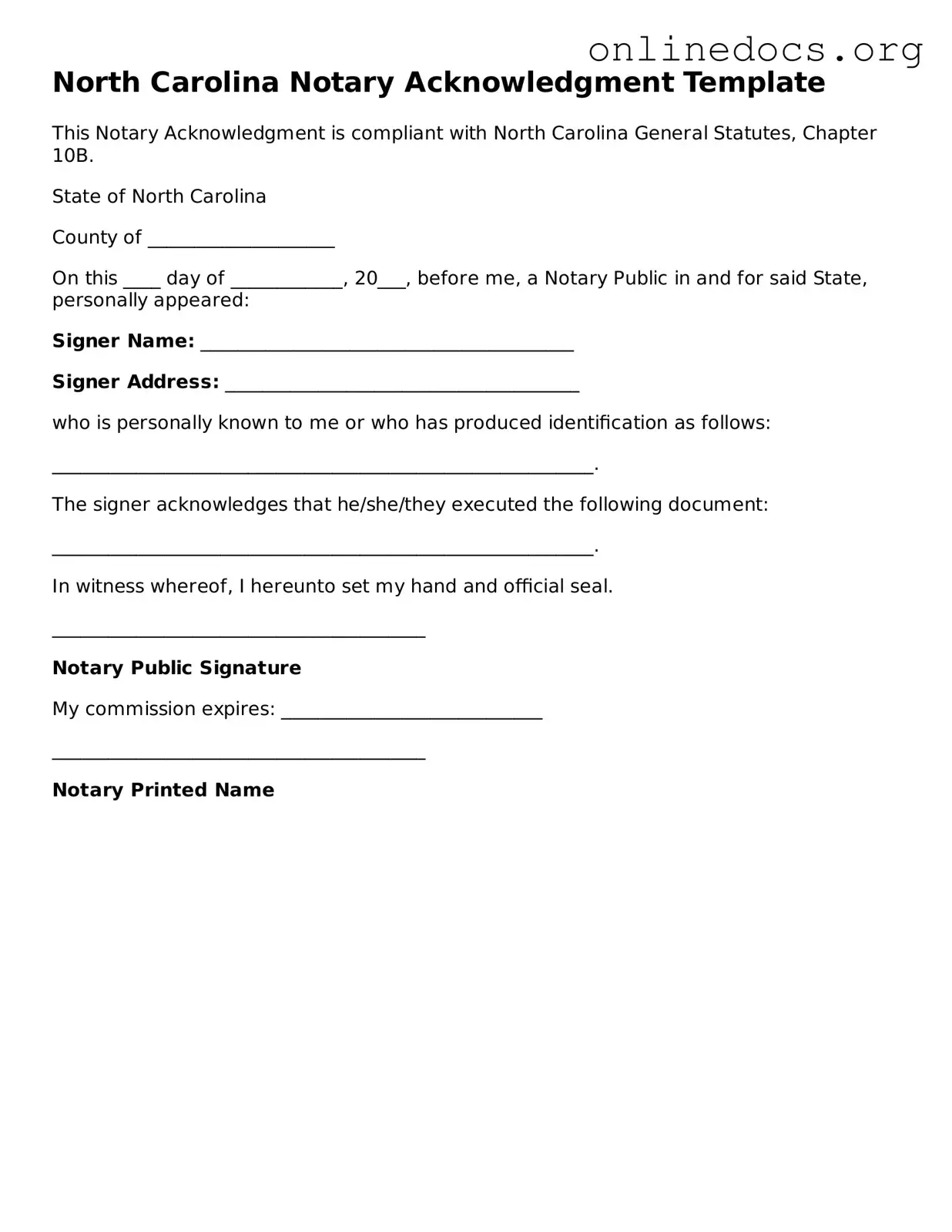The North Carolina Notary Acknowledgment form shares similarities with a standard Affidavit. Both documents require a signature and the presence of a notary public. An Affidavit is a written statement confirmed by oath or affirmation, which means the individual swears to the truth of the information contained within it. Like the Notary Acknowledgment, it serves as a formal declaration and is often used in legal proceedings to affirm the authenticity of the information provided.
For those looking to establish a solid foundation in rental agreements, consider utilizing a documented Lease Agreement template that effectively outlines the rental terms and conditions. You can find a comprehensive guide with the Lease Agreement details by visiting this resource on Lease Agreement templates.
Another document similar to the Notary Acknowledgment is the Power of Attorney. This legal document allows one person to act on behalf of another in legal matters. The signature of the principal must be acknowledged by a notary public to ensure that the document is valid. Both documents require the notary to verify the identity of the signatory, providing an extra layer of protection against fraud.
The Deed of Trust is also comparable to the Notary Acknowledgment form. A Deed of Trust is used in real estate transactions and requires notarization to be legally binding. Similar to the Notary Acknowledgment, it involves the acknowledgment of a signature by a notary, confirming that the parties involved have willingly signed the document. This ensures that the terms of the trust are recognized and enforceable.
A Bill of Sale is another document that bears resemblance to the Notary Acknowledgment. This document serves as proof of the transfer of ownership of personal property. While not all Bills of Sale require notarization, having a notary acknowledge the signatures adds legitimacy and can help prevent disputes about the transaction in the future. Both documents emphasize the importance of verifying the identities of the individuals involved.
The Last Will and Testament also shares characteristics with the Notary Acknowledgment. Although wills can be valid without notarization, having a notary acknowledge the testator’s signature can help ensure that the will is recognized as valid in probate court. Both documents require a clear expression of intent and the verification of the signer’s identity, which can help avoid challenges to the document's authenticity later on.
Similar to the Notary Acknowledgment is the Certification of Trust. This document provides proof of the existence of a trust and outlines its terms. Notarization is often required to verify the authenticity of the signatures involved. Both the Certification of Trust and the Notary Acknowledgment serve to confirm the legitimacy of the documents, ensuring that they can be relied upon in legal matters.
The Affidavit of Identity is another document that parallels the Notary Acknowledgment. This affidavit serves to verify a person’s identity, often required in various legal and financial transactions. Just like the Notary Acknowledgment, it must be signed in the presence of a notary, who confirms the identity of the individual signing the document. This helps to prevent identity theft and ensures that the information provided is accurate.
Another document that bears resemblance is the Consent Form. Often used in medical or legal situations, a Consent Form outlines the agreement of an individual to participate in a procedure or action. Notarization can enhance the validity of the consent by ensuring that the individual signing it is doing so voluntarily and understands what they are consenting to. Both the Consent Form and the Notary Acknowledgment emphasize informed consent and the importance of verification.
The Certificate of Acknowledgment is similar to the Notary Acknowledgment in that it is a document specifically designed to confirm that a signature was made in the presence of a notary. It serves as evidence that the signer has willingly signed the document and understands its contents. Both forms are used to add a layer of security and authenticity to important legal documents.
Lastly, the Release of Liability form is comparable to the Notary Acknowledgment. This document is used to waive certain rights, often in situations involving risk, such as sports or recreational activities. Notarization can lend credibility to the release, ensuring that the signer fully understands the implications of waiving their rights. Both documents underscore the importance of informed consent and the verification of the signatory’s identity.
